The spokeshave in woodworking is a basic hand tool and it has the same significance , as the hand planes and the other hand tools .
It isn’t difficult to work with and it doesn’t need expert knowldege in order to use it , even an amateur – hobbyist , woodworker . If you have someone to show you some and make a couple of tries , you’ll be ok , to start using a spokeshave .
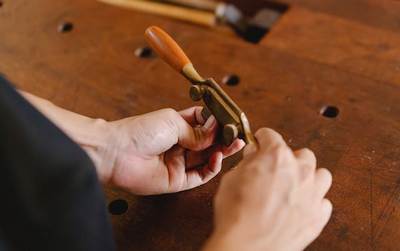
The spokeshave is a woodworking hand tool that consists of a metalic or wooden , totally straight or curved like the “wings of a seagull” at the end body(handles) , which has in its middle an adjustable blade stiffly on the bed , having the same approach to the hand planes .
Where is a spokeshave , Used in woodworking ?
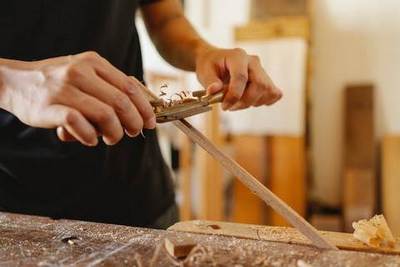
The spokeshave used in the woodworking to cut very precise and controlled , big wood masses , to cut smaller wood masses , to slice wood , to lightly slice wood , to smoothen and shape wood , in straight or curved wooden surfaces .
Spokeshave is a cutting tool , which can cut – slice – shape – refine – adjust – trimming – chamfer edges – smoothen , of any type of wood and any kind of surface , straight or curved .
What are the Main Parts of a Spokeshave ?

The main parts of a spokeshave are :
1) The full body – frame .
2) The handles .
3) The cutting blade secured to the bottom surface of the body(sole) with the iron cap .
4) The iron cap screw .
5) The iron cap angle adjustment screw .
6) The cutting blade adjustment screws – knobs .
What are the 2 Types of a spokeshave , depending on their Body Material ?
The 2 types in here are :
1) The metalic body spokeshaves , which they have the the bevel – down .
2) The wooden body spokeshaves , which they have the bevel – up .
What are the 4 Types of Spokeshave , in general ?
The 4 types of the spokeshaves are :
1) The Flat bottom .
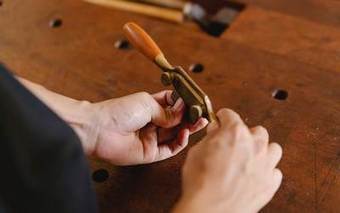
2) The Rounded bottom .
3) The Concave shaped .
4) The Convex shaped .
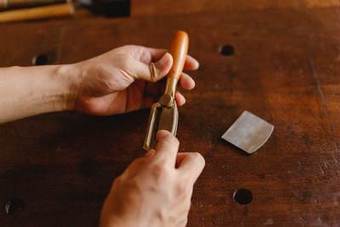
What is the Difference , between a Concave and a Convex spokeshave ?
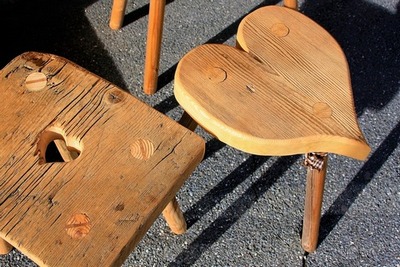
The convex spokeshave is mostly for embedded – inside work , than the concave is for shaping chair legs , make boat paddles , et.c . It’s made fomr more “outside” curves and carpentry work .
What is the Difference , between a Flat and a Round Spokeshave ?
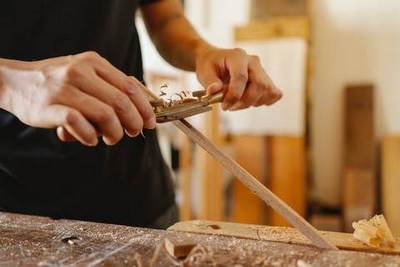
The flat spokeshave is for more rough wood shaping and not so refine shaping , but it’s preventing the blade to touch the wood . The round spokeshave is for more indide – tenacious curved work and curvatures .
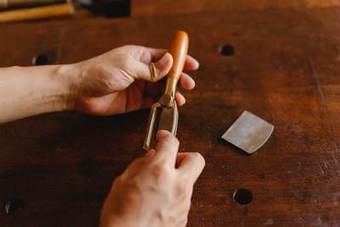
The round spokeshave cuts concave shapes and the flat cuts convex shapes and can also chamfer an edge .
What is the Difference , between a Spokeshave and a Planer ?
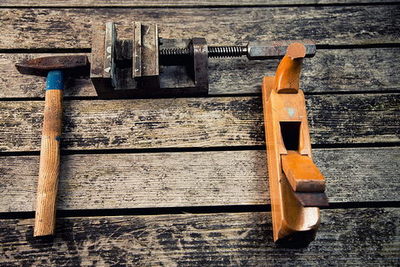
These two hand tools are “first cousins” and very similar .
The planer cuts – shapes mostly straight and flat surfaces and it doesn’t have capabily to shape , curves .
The spokeshave is made for he tight – difficult curves of any type and difficulty and can slice – shape wood , of any design changing positions and moving as you like .
What is the Difference , between a Drawknife and a Spokeshave ?

The drawknife , removes big masses of wood and it’s made to cut wood with easiness and efficiency , but with no delicacy and detail perfection in any type of a surface , as the spokeshave can do .
What is the Difference , between a Scraper and a Spokeshave ?
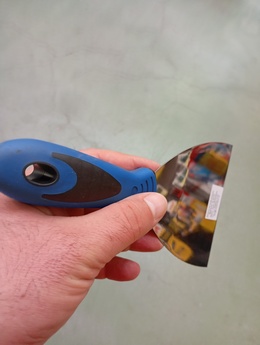
The scraper cannot shape a wooden surface and it only “scratches” slightly the surface , making very tiny corrections , refining a final result .
The spokeshave shapes wood , curved or not . The scraper’s job , comes after the spokeshave for the final touch , before the sanding , et.c .
What is the most Versatile , spokeshave ?
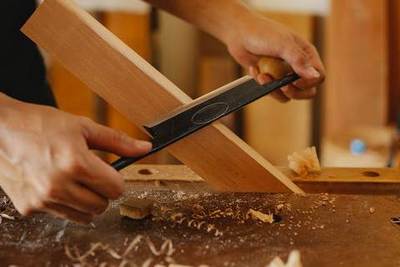
The flat type of a spokeshave is the most versatile , because you can achieve the majority of the cutting – shaping – smoothing results you want , in a totally flat or a curved enough wooden surface .
If you don’t have a rounded bottom spokeshave , you can do the job using a flat one with big success .
What can you Make , with a spokeshave ?
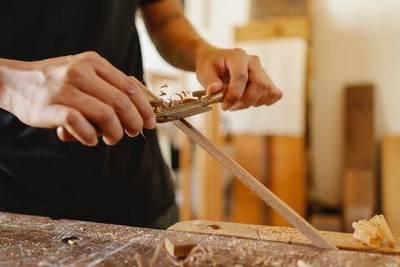
Using a spokeshave , you can do a variety of woodworking projects and jobs , than its primary use which was creating spokes for wheelbarrows , push carts and stuff like that .
You can use it for trimming , edging wood of any type even plywood , et.c . You can chamfer an edge of a wooden surface and adjust a bevel . You can slice wood of any curvature you want with “surgical” detail .
You can flatten a wooden surface , slightly remove – flattening a wooden swelling , a small imperfection and make the last refining corrections to any surface .
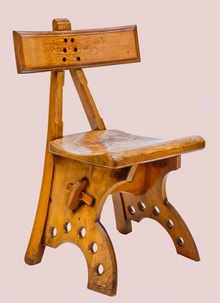
You can use the spokeshave to make a bow , an arrow , boat paddles , for table – chair legs especially if they have difficult – vintage designs .
You think , you cannot make your own furniture ? Read THIS and re – think .
What is the Body of a spokeshave , Made of ?
Usually the spokeshaves are metalic , made from iron , cast iron and other types of “soft” iron , but you can find a wooden spokeshave , also .
The handles of the spokeshave if there aren’t metalic and they’re wooden , they are from beech wood , oak , olive some vintage ones , hickory , ash .
How to Use a spokeshave ?
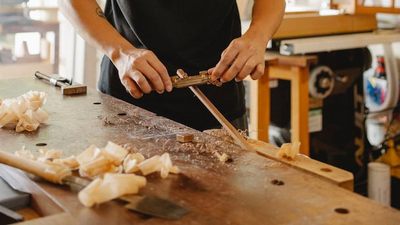
After you’ve secured your wooden piece in a stable position and you have in front of you , the surface you want to work with , you place your fingers to the spokeshave’s handles and you start pulling or pushing , slicing – cutting wood .
Of course you’ve adjusted the blade to the angle you want .
What angle is a spokeshave , cutting ?
There is no specific angle to set your spokeshave’s blade for your any type of wood cutting , but the usual cutting range is between the 20o – 35o degrees . The concave spokeshave angle goes to 45o .
What is the Best angle , for a spokeshave ?
Even if there are no “angle laws” in here , an angle of 25o – 26o degrees , is a very common one for many spokeshave jobs .
What makes a Good , spokeshave ?
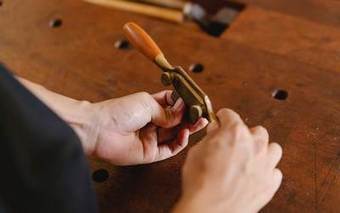
A general solid and well made construction , with a sharp blade , good quality screws , a good quality blade cap and two well made and designed handles to fit in your hands – fingers , are needed for a good spokeshave .
The good spokeshave , should give an amazing handling feeling .
Do i Need a spokeshave ?
Yes , you surely need a couple of nice quality spokeshaves , to shape your wooden surfaces with extreme detail , precision and “treat them” with finesse .
Have you ever thought that you can have 10 hand tools with less than 100$ ? In HERE , the answer .
Keep woodworking , always .
